Soaking up the sunshine south of the border in Puerto Peñasco, Mexico.
Chasing the Midnight Sun
An arctic adventure on the Summer Solstice.
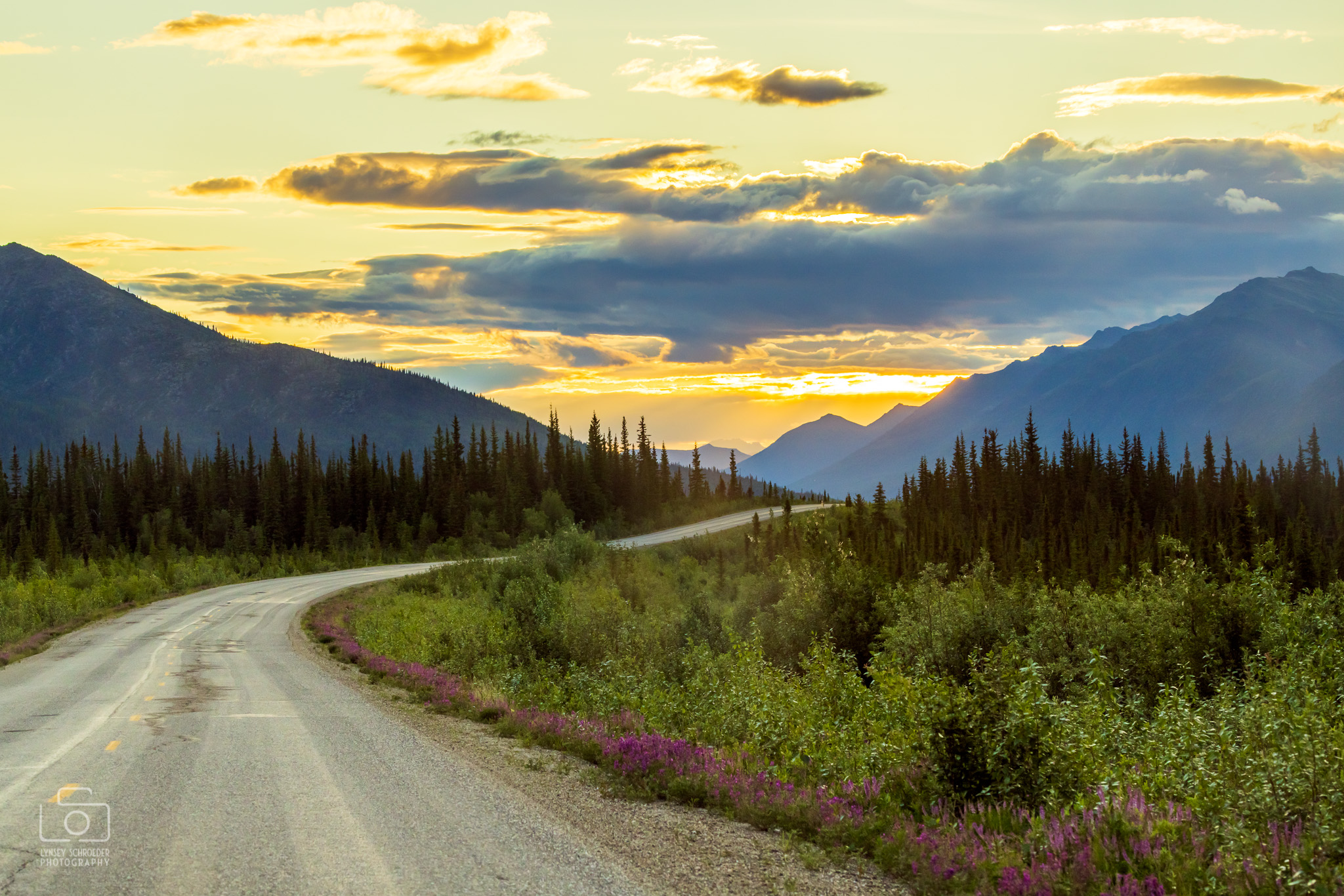
I’ve been to Fairbanks twice in the winter to chase the Aurora and have absolutely fallen in love with The Last Frontier State, so a visit in the summer has been on my to-do list for a few years now. Don’t get me wrong, between the northern lights and the all-day golden hour of the winter sun, my previous visits have been incredible, but there’s something magical about witnessing the sun up in the sky in the middle of the night. Maybe not something you hear everyday from an astrophotographer.
After catching a flight to LAX, then Seattle, then finally on to Fairbanks, we landed at 12:30 am to a bright, sunlit sky. It was a bit disorienting because the light felt like dawn, so after traveling all day it almost felt like we had just landed in Europe with a massive time change and it was morning. We headed out to the curb to catch an Uber, only to find that there weren’t any available—old school cab it is! So that was our first lesson learned about traveling in Alaska: don’t count on being able to get an Uber/Lyft, especially in the middle of the night. On previous trips I’ve always rented a car, but with the nationwide rental car shortage it wasn’t really an option this time around.
I watched out the window as we drove to our hotel. The sights felt very familiar after all the time I’d spent there in the past, but everything also looked so different. Instead of a blanket of crisp, white snow covering the landscape, the town was lush and green. The sun climbed higher in the sky as we drove, which was certainly a novelty since it was about 1 am and we were about to go to bed!

We arrived at the Northern Alaska Tour Company office bright and early and loaded into a coach bus bound for the famous Dalton Highway. If you’re looking to visit the Arctic Circle, Northern Alaska are the ones to call. They offer day trips as well as multi-day excursions to Coldfoot and other destinations further north. When I visited Fairbanks in 2018 we did their winter day trip to Coldfoot via small plane, which is another tour I’d definitely recommend if you’re looking for something fun and different to add to your Alaskan itinerary.

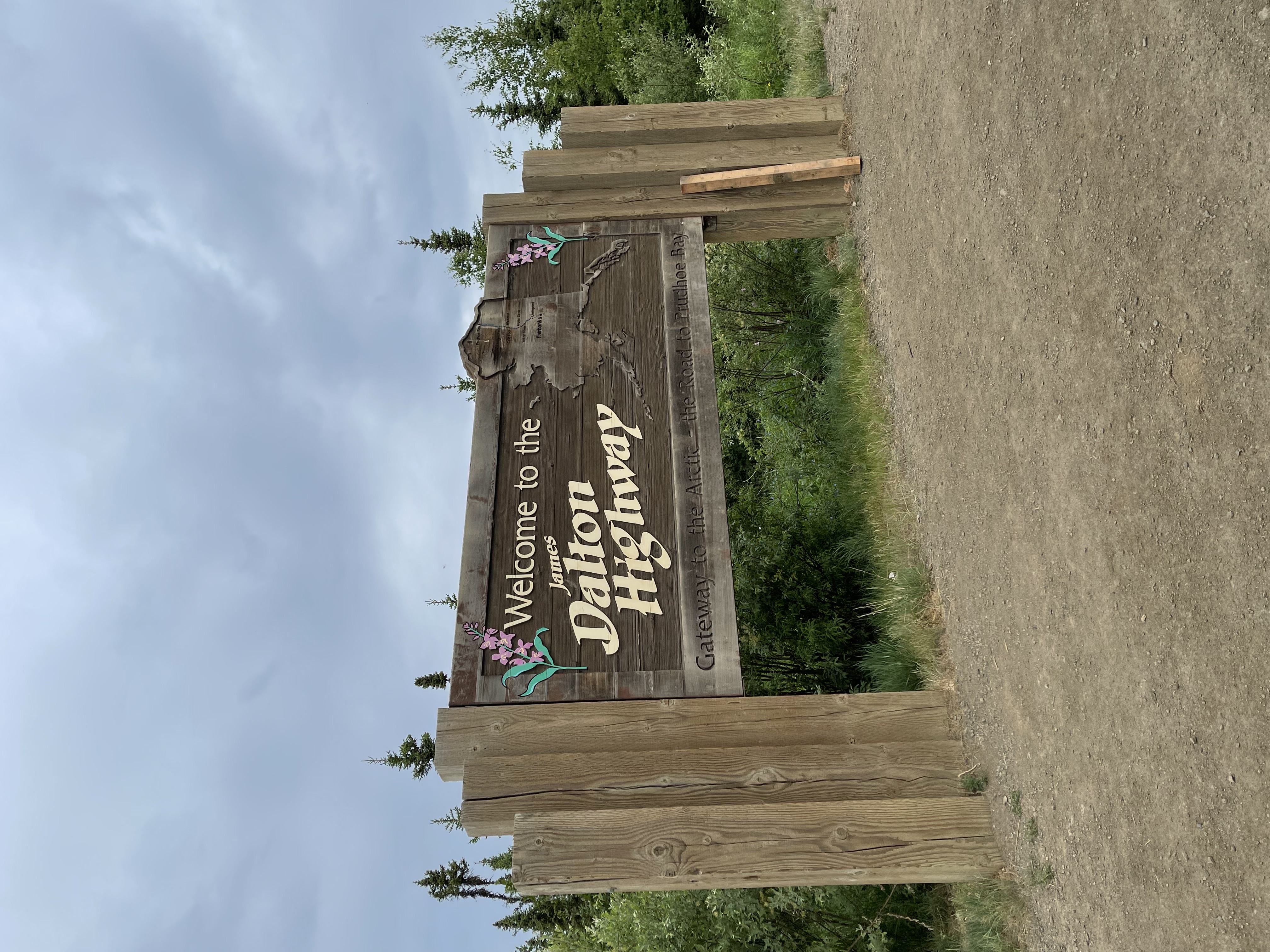


The drive itself, in my opinion, was absolutely worth doing once, but, in the future, when given the option between the eight hour drive versus a one hour flight in a prop plane, I’d probably go with the latter. The views were beautiful, of course—hundreds of miles of pure, untamed wilderness in every direction. Rolling hills covered in evergreen trees in front of a backdrop of looming mountains. But, it was a long, bumpy ride, and there really wasn’t much to see; the views didn’t change too much as we continued north. I think I dozed off a few times.
After several hours of driving and a brief lunch stop at the Yukon River Camp, we arrived at 66º 33′ N: The Arctic Circle. We shuffled off the bus and waited our turn to get photos with the Arctic Circle sign. Five of us then grabbed our bags and boarded a different van, while the rest of the group got back on the bus to turn around and drive home. In my opinion, that’s a long day of driving for just a selfie with a sign, not really worth it. If you’re looking for a tour to the Arctic Circle, the trip up to Coldfoot is a must—even if only for one day and/or night.
We arrived in Coldfoot (a place made famous by the TV show Ice Road Truckers) at about 8 pm and got settled into our room. The lodging was pretty bare bones, think log cabin meets dorm room, but it was clean, dry, and plenty comfortable. I don’t ask for much more than that in a hotel, especially when there’s so much exploring to do!
Coldfoot isn’t exactly a town, it’s really just a post office, a gas station, a lodge, a visitor’s center, and a café/bar. Meals were served buffet style with offerings that changed daily, nothing fancy (though honestly, who travels to the arctic wilderness expecting a five star resort?) but definitely good, home-cooked food. Staying in Coldfoot almost felt like summer camp: here’s your room, here’s what’s for dinner, here’s the schedule of activities… and I say that on a positive note. It was great!


We were up early the next morning, and after a nice shower with surprisingly fantastic water pressure and a delicious breakfast of steak and eggs, we met our tour guide who would be taking us up into the Brooks Mountains for the day. It was just the Steven and I on the trip, and since nobody had signed up for his afternoon tour, we had the whole day to explore the Dalton Highway. We headed north for hours through some of the most beautiful, unspoiled wilderness I’ve ever seen, stopping for photos along the way.



Oh, and another important fauna of the arctic ecosystem: mosquitos! Now, I grew up in Minnesota, where we have a running joke that the mosquito is our state bird, but let me tell you—we have not earned the right to make that claim! The clouds of mosquitos in arctic Alaska were the worst I’ve ever seen in my life… and I have been to the Amazon Rainforest! From the moment you step out of the van, you’re immediately inundated with a thick cloud of whining, buzzing insects swarming your face and hands.
There are 35 different species of mosquito in Alaska, and they play a very important role in the ecosystem, especially in the far northern interior region of the state. In fact, the mosquitos are the only pollinators above the arctic circle, so you really can’t hate them if you want to see the lush forests and vibrant wildflowers.

If you take one thing away from this blog for your next trip to Alaska, make it this: bring bug spray!


The weather in the arctic was pretty dynamic. While the morning started off overcast and raining, the sun came out before too long and we had beautiful light as we traveled up through the top of Atigun Pass. This is the highest point along the Dalton highway sitting at 4739 feet. The temperature dropped dramatically as a thick fog rolled in over the mountaintops, obscuring what was supposed to be an incredible view. With the afternoon sun totally blocked out by the clouds, the temperature dropped into the low 40s as we went over the pass—it was hard to believe that it was 118º when we left Tucson only two days ago!
We continued on down the pass and into the North Slope region of Alaska. By this point the trees had disappeared and we were looking out over looming mountains, grassy hills, an abundance of small ponds, and the Transalaska Pipeline that continued to zigzag across the landscape.
The last point on our journey North was Galbraith Lake, where we hiked a bit out to some ice shelves over a flowing creek. I made it to the farthest north point I’ve ever been: 68º 27′ N, only about 150 miles from the Arctic Ocean (I’ll definitely have to make it back to break that record).
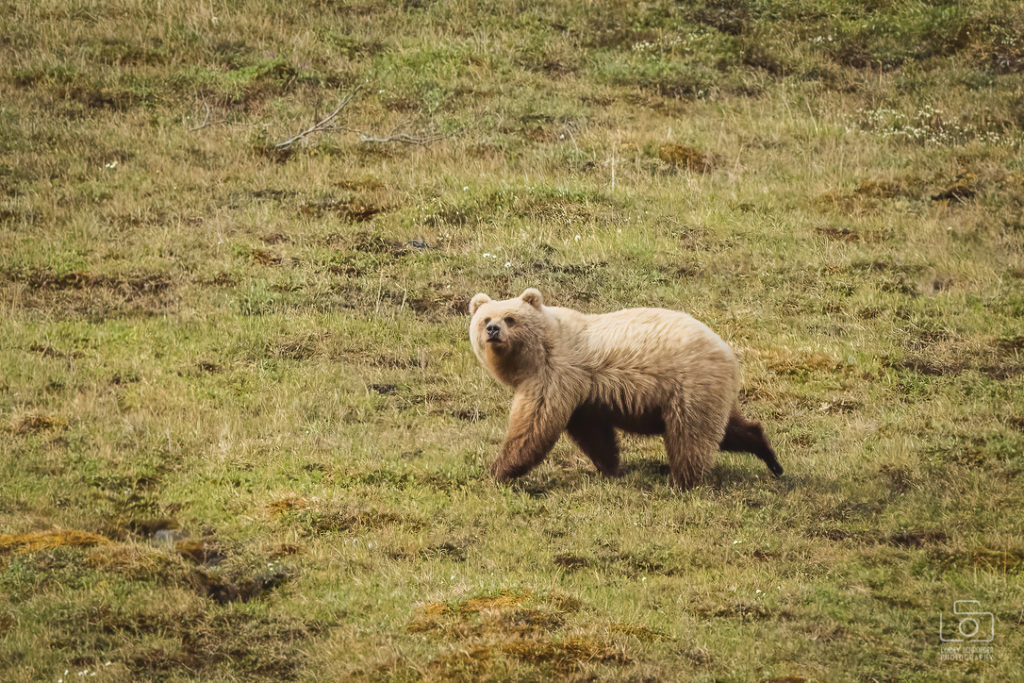


While chatting with our guide on the eight+ hour adventure into the wilderness, we inevitably got talking about photography and why I was in Alaska on the Summer Solstice in the first place: to see (and shoot) the midnight sun. Unfortunately, Coldfoot (really, the only place with a hotel between Fairbanks and Barrow) sits in a deep valley, meaning that the view to the North (and the East, West, and South) would be obstructed when the sun got low at solar midnight. It still wouldn’t get dark, but there’s no way I was going to get my midnight sunburst shot from Coldfoot, or anywhere within walking distance for that matter. So of course I was ecstatic when our guide, Justin, offered to take us up to a lookout point to watch the Midnight Sun!
So, you might be wondering, what’s the deal with the Arctic Circle and the Summer Solstice? Well, we know that the Earth rotates around the sun once a year, and around its axis once a day. But the Earth is tilted on its axis by 23.4°, which means that the sun shines disproportionately at different latitudes and different times of year. This is why we have seasons. In the Northern Hemisphere summer, the sun is angled so that the sun is shining more directly on the Northern Hemisphere, while the Southern Hemisphere experiences winter due to having less sunlight—and vice versa. The summer solstice is the day at which the sun reaches its highest point in the sky and sets at exactly due North, and it’s also the longest day of the year. The Arctic Circle is the line at which the sun never sets on the summer solstice. So from the overlook at Gobbler’s Knob, we watched the sun get lower and lower, graze the horizon in the north, and then begin to rise again. How many people can say they’ve seen the sun move across the sky from west to east? Bucket list item, check!

At 11 pm, after dinner and a short nap, we met back up with Justin and loaded into the van. Several of his co-workers from around camp also joined us, excited about the prospect of watching the Midnight Sun on the Summer Solstice. Most of them were new to Alaska, there to work for the summer—though it was still a novelty to those who weren’t! We left Coldfoot and headed south for an overlook called Gobbler’s Knob.
Despite the late hour and lack of sleep, the full van was abuzz with excitement and anticipation. The clouds had, thankfully, cleared (more or less), and the sun was beginning to creep closer and closer to due North as we gained elevation. Justin connected a bluetooth receiver and asked me (the only paying guest of the group) to put on some tunes—there’s only one playlist I use in a situation like that! Pleased with my choice, he cranked the volume up and we all rocked out to “Don’t Stop Me Now”, because we were definitely having a good time!
And that’s the story of how I spent the night of the summer solstice in the Alaskan Arctic rocking out to Queen on a tour that I essentially invented. It was a huge success, so if Northern Alaska Tour Company starts offering a Midnight Sun excursion in the future, you know who to thank. 😉
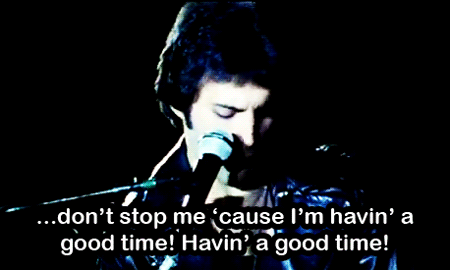

It’s also worth mentioning that the “Midnight Sun” doesn’t really happen at midnight, at least not the midnight that we’re used to. Solar midnight is the time at which the sun is the lowest, whether or not it’s above the horizon (while Solar Noon is the time at which it’s the highest), and it’s only roughly aligned with the time midnight. The sun doesn’t follow timezones, daylight savings, etc., so even though the world is broken up into distinct timezones, it’s really more of a gradient. Solar midnight in Tucson on the Solstice is at 12:25 am, while Solar midnight in Minneapolis is at 1:14 am, even though the time zone difference between them is two hours. The difference is the greatest in places that are the closest to timezone boundaries. So, because of the way that the Alaskan Timezone is drawn, plus the fact that they are currently observing Daylight Savings, Solar midnight (on the solstice) actually happens at 2:02 am.
We made it back to camp at about five in the morning, of course the sun was already well up and ready to start the day, but we were not. We crashed for about three hours before we had to get up and head out for our activities for the day. Worth it.
After another tasty breakfast of steak and eggs from the Coldfoot Camp buffet (I’m a big fan of protein in the morning), we met up with another guide for a fat tire bike ride. We biked over the river and through the woods to where the pipeline goes through Coldfoot and got to touch it, which is pretty much obligatory for a visit to northern Alaska. The weather was gorgeous after getting all of the rain out of its system the previous day. What a fantastic way to start the morning!
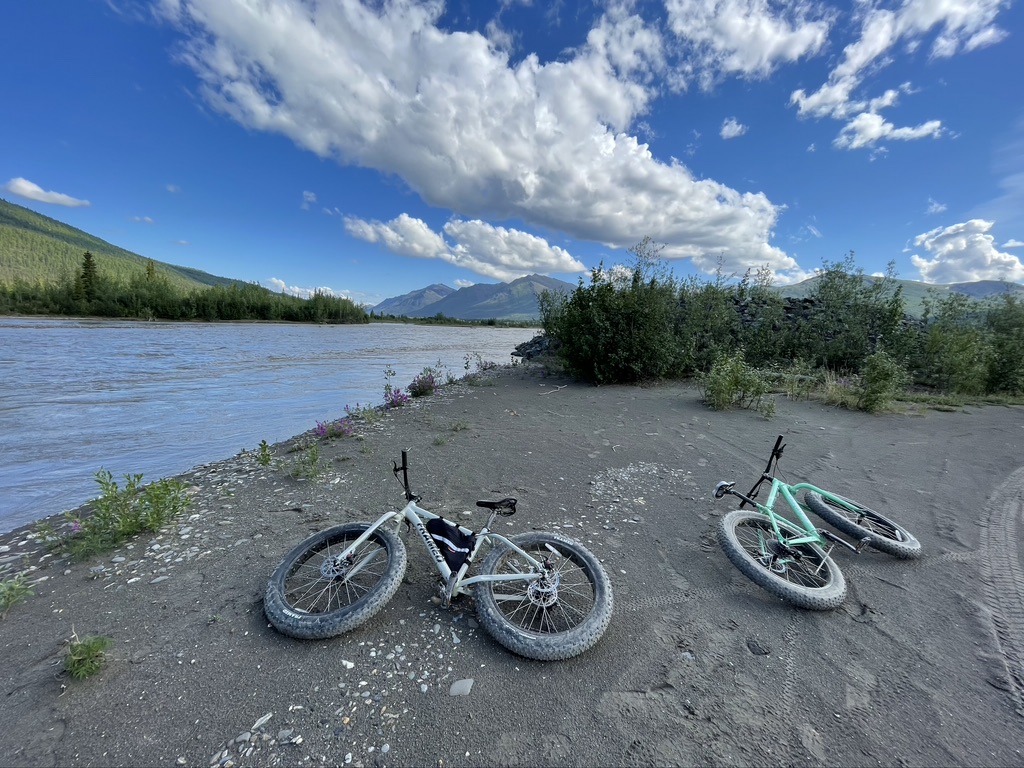


We then met up with another couple and got back into a van to head up to Wiseman, a small settlement just north of Coldfoot along the Koyukuk River—which we were about to raft down. It was a leisurely ride, no rapids or anything, and definitely a must-do activity for anyone considering a trip up to Coldfoot.
Following the rafting trip we picked up our bags from the lodge and headed across the street to the airstrip, where a small Piper prop plane was waiting for us on the runway. Time to head back to Fairbanks! Having flown to Coldfoot via prop plane on a day trip a few years ago, this wasn’t a new experience for me, but the novelty is there all the same. It’s a beautiful, scenic flight, and was much much quicker than the drive up.


With our trip drawing to a close, we landed in Fairbanks just after seven—with about six hours to kill before we had to catch our redeye flight home. Unfortunately, with luggage in hand, no rental cars available, and a lack of Uber/Lyft drivers, we didn’t have a lot of options for ways to kill that time, so when the couple from the rafting trip offered us a ride to the airport, we took them up on it and just waited at the gate. I managed to sleep most of the way home, thanks in part to a first class upgrade (I’m a proud Platinum Medallion member on Delta), and we landed in Tucson, exhausted, at about 10 in the morning after a long connection in Salt Lake City.
All-in-all it was a fantastic, albeit brief, trip to the Alaskan Arctic, and one that I would highly recommend to anyone looking for a little bit of adventure. Northern Alaska Tour Company and Coldfoot Camp took great care of us—I have nothing but good things to say! Fewer than 1% of visitors to Alaska actually go as far north as the Arctic Circle, and I firmly believe that the other 99% are really missing out on an amazing experience. There’s just something about standing out in the unspoiled wilderness that really makes you feel small, but I mean that in a good way. This planet is amazing.